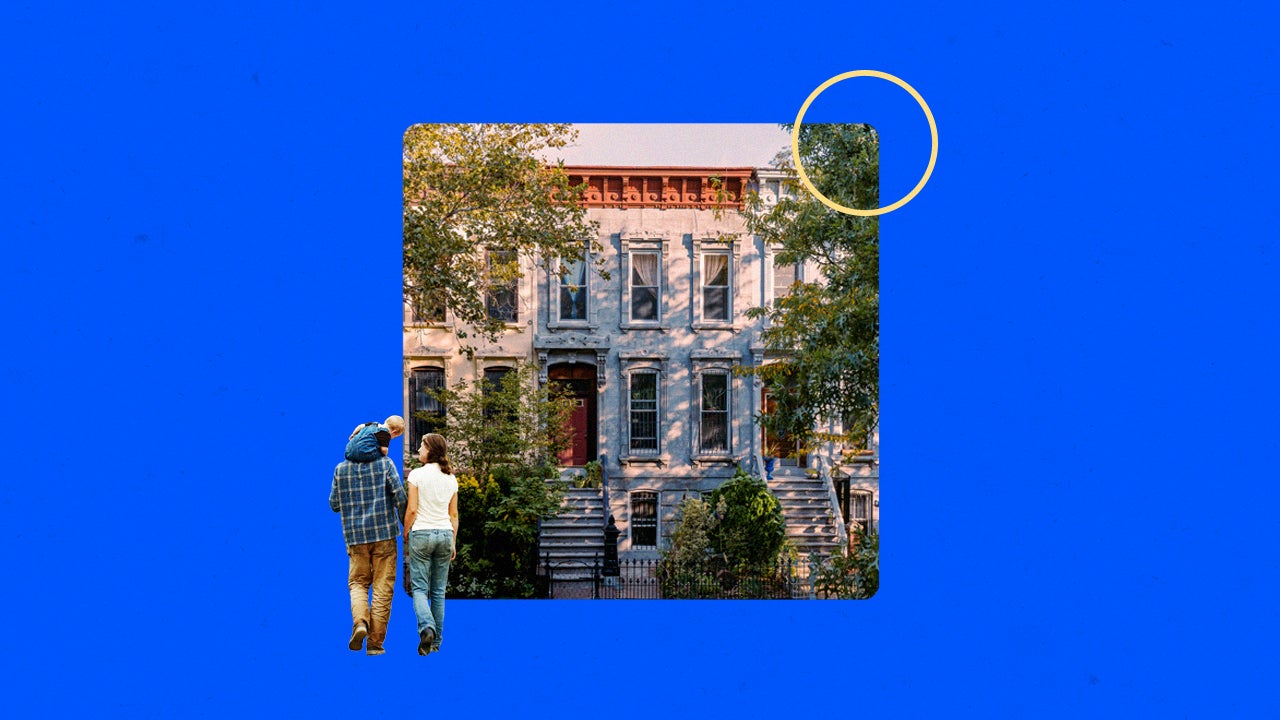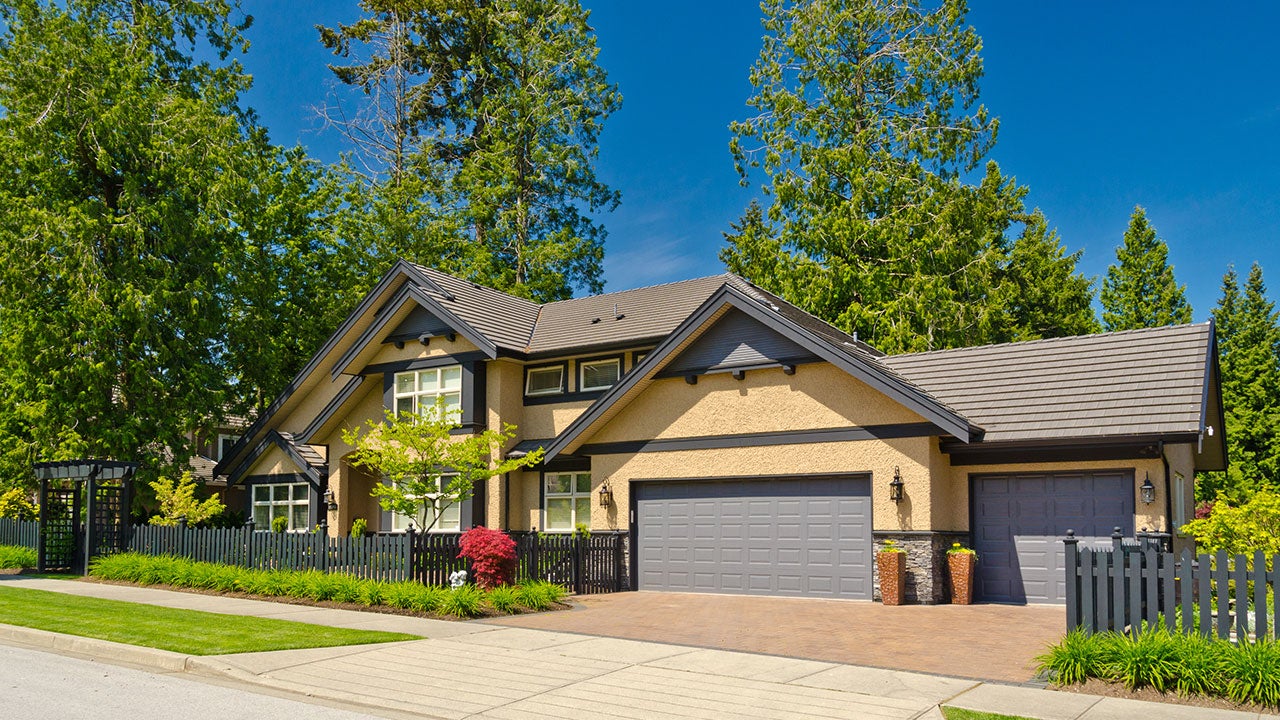What is an FHA loan? Requirements, rates and more

Key takeaways
- FHA loans are a class of mortgages that are insured by the Federal Housing Administration.
- That insurance, coupled with less strict lending requirements, makes FHA loans a popular option.
- FHA loans require a minimum down payment of 3.5 percent for those with credit scores of 580 and up.
What is an FHA loan?
An FHA loan is a mortgage that is insured by the Federal Housing Administration (FHA) and offered by private FHA mortgage lenders. FHA loans often have less strict requirements than conventional loans, making them popular with first-time homebuyers and younger buyers.
How do they work?
FHA loans work like most other mortgages, only they’re backed by the federal government. This doesn’t mean that the government provides the funds directly to borrowers, however. FHA loans are widely available from private lenders, who can offer these loans to borrowers with lower credit scores and more debt, knowing that the government will protect part of their investment in the case of default.
In terms of options, FHA loans are similar to conventional loans. You can choose either a fixed or adjustable interest rate and a loan term for a set number of years: 15 or 30.
You’ll still pay closing costs for an FHA loan, such as appraisal and origination fees. The FHA allows home sellers, a home builder or a mortgage lender to cover up to 6% of these costs.
FHA loan insurance
In addition to the typical closing costs, FHA borrowers must pay upfront and annual mortgage insurance premiums, or MIPs. Similar to private mortgage insurance for conventional loans, MIPs protect the lender if you were to stop repaying your loan. These MIPs show up as both a fee at closing and an additional charge on your monthly mortgage payment. How much you’ll pay annually depends on the size of your down payment and length of your loan term.
If you put down 10% or more, you can get rid of FHA mortgage insurance after 11 years. If you put down less than 10%, you’ll pay mortgage insurance until you pay off the loan, sell the home or refinance to a conventional mortgage.
FHA loan rates
FHA loan rates will vary from one lender to another, but generally they are competitive with, and often slightly lower than, rates for conventional loans. According to Bankrate data, the national average 30-year FHA mortgage APR was 5.88% as of Nov. 9, 2025. Meanwhile, the national average APR for a 30-year conventional loan was 6.32%.
FHA loan requirements
Here’s an overview of the requirements for an FHA loan:
- Credit score: Your credit score will determine your down payment requirements. With a score of at least 580, you’ll need to make a minimum 3.5% down payment. If your score falls between 500 and 579, you’ll need at least a 10% down payment. Individual lenders may require higher scores.
- Down payment: You’ll need to put at least 3.5% or 10% down, depending on your credit score. You may be eligible for down payment assistance to help cover the cost.
- Debt-to-income (DTI) ratio: No more than 31% of your income should go toward mortgage payments, and no more than 43% should go to debt payments overall — though some lenders will allow higher ratios if, for example, you can make a large down payment.
- Occupancy rules: FHA loans are meant for primary residences, meaning you must live in the home the majority of the time. It can have up to four units, as long as you live in one as your primary residence.
- Mortgage insurance premiums: MIP involves an upfront premium of 1.75% of the loan principal, typically paid at closing, plus annual premiums. These may be between 0.15% and 0.75% of your loan amount — depending on your down payment, loan amount and loan term — and are usually paid monthly.
- Inspection and property requirements: To get an FHA loan, a HUD-approved appraiser must assess the property’s market value and verify that it meets HUD’s basic standards. These include being structurally sound and having adequate ventilation and working heating, plumbing and electrical systems, among other requirements.
- Loan limits: In 2025, you can borrow between $524,225 and $1,209,750 for a single-family home with an FHA loan, depending on your location.
Types of FHA loans
There are several types of FHA loans, including:
- Basic home mortgage loan or 203(b) loan: The 203(b) loan is the FHA’s main home loan program for buying a home or refinancing.
- Rehabilitation mortgage or 203(k) loan: An FHA 203(k) loan covers the home’s purchase price and repairs. This type of FHA construction loan comes in Standard and Limited options, which cover different types of renovations and have different loan limits. These loans are best for someone buying a fixer-upper.
- Disaster victim mortgage or 203(h) loan: If you’ve lost your home due to a presidentially designated disaster and need to rebuild or buy a new home, you could qualify for an FHA 203(h) loan with no down payment.
- Home equity conversion mortgage (HECM): A HECM is a reverse mortgage insured by the FHA that allows those over the age of 62 to tap the equity in their home as tax-free income. There are downsides to reverse mortgages, but they can be a helpful financial tool for those looking to supplement retirement income.
- Energy–efficient mortgage (EEM): This is a mortgage designed for the purchase of an energy-efficient home, or to upgrade a home to make it more energy-efficient. These upgrades might include insulation, solar panels or energy-efficient appliances.
- Graduated payment mortgage or 245(a) loan: This uncommon type of mortgage comes with payments that start small and increase over time. They’re most often used by those who expect to make more money in the future.
Help us shape the future of personal finance
We’re building something new to make rate shopping smarter and simpler. Join our waitlist to get early access, share your feedback, and unlock exclusive offers.
Priority rate alerts
Exclusive member offers
Time saving
Limited spots remaining
You're signed up!
Now, help us personalize your experience. Answering the next few questions will ensure you receive the most relevant tips and offers.
What are you looking for?
Tell us which products you are in the market for
What do you already have?
Tell us which products you already have
Tell us a bit more about you.
Are you a homeowner?
Tell us about your financial situation
What is your FICO credit score
One more thing
What is your annual income?
Stay tuned to see what we're building
You're all set! We're gearing up to share something big. You'll hear from us soon with what's next.
Pros and cons of FHA loans
Pros
- Lower credit requirements: An FHA loan provides a mortgage option for borrowers with credit scores as low as 580 or 500, depending on the size of the down payment.
- Lower down payment requirements: With a credit score of at least 580, you can make a down payment of as little as 3.5%.
- You can own a home sooner: Since FHA loans are easier to qualify for, you might be able to get into a home and start building equity sooner.
Cons
- Mortgage insurance requirements: Everyone pays upfront mortgage insurance premiums (MIP) with an FHA loan. If you put down less than 10%, you’ll pay annual MIP for the life of the loan. If you put down at least 10%, you’ll pay annual MIP for 11 years, or until you refinance or sell.
- Property requirements: FHA mortgages are not allowed to exceed certain amounts, which vary based on location. You have to live in the property, too: FHA loans aren’t designed for second homes or investment properties.
- You could pay more: When you compare mortgage rates between FHA and conventional loans, you might notice lower FHA interest rates but higher annual percentage rates, or APRs. The APR represents the total cost of borrowing, including fees and points.
Who is an FHA loan best for?
If your credit score is at least 620, you’re almost always better off with a conventional loan. That way, you won’t have to pay mortgage insurance for the entire loan term — you can cancel PMI when you accumulate 20 percent equity in your home. However, if you fall into any of these categories, an FHA loan may be a good choice:
- You’re a first-time homebuyer: It can take years to build your credit and save up for a down payment. But because FHA loans have more lenient credit and down payment requirements, you might not have to wait as long to purchase your first home.
- You have a lower credit score: If your credit score is on the lower side, an FHA loan can be a great option. It can help you get into a home more quickly, and with a lower down payment.
- You can’t afford a large down payment: While you can put down as little as 3% with a conventional loan, you’ll generally need a higher credit score to do so. However, with an FHA loan, you still only need to put down 3.5% — even with a credit score as low as 580.
FAQ
Why we ask for feedback Your feedback helps us improve our content and services. It takes less than a minute to complete.
Your responses are anonymous and will only be used for improving our website.










